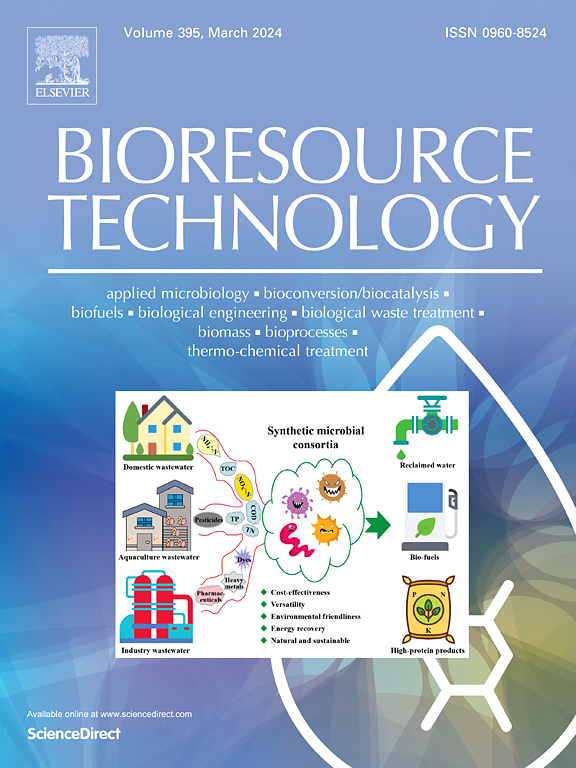IF 9.7
1区 环境科学与生态学
Q1 AGRICULTURAL ENGINEERING
引用次数: 0
摘要
本研究考察了处理城市污水的全规模人与生物反应器中的生物膜厚度、密度和微生物组成,重点关注它们的空间和操作可变性。人与生物反应器的盒式排列产生了厚度梯度,前端盒内的生物膜厚度是后端的两倍多。由于气流减少,冲刷强度降低,导致生物膜变厚。微生物群落的纵向和运行阶段各不相同,较厚的生物膜中厌氧性微生物(如发酵剂和硫还原剂)相对较多,而好氧性硝化细菌较少。亚硝化单胞菌是主要的氨氧化剂,而硝化细菌和 Ca.亚硝酸盐氧化剂以亚硝酸单胞菌为主。16S RNA 基因图谱与生物膜厚度(R2 = 0.8)和硝化率(R2 = 0.4)密切相关。以前从未对大规模 MABR 生物膜特征进行过研究。研究结果对改进建模实践和未来 MABR 设施的设计具有实际意义。本文章由计算机程序翻译,如有差异,请以英文原文为准。

Characterizing biofilm thickness, density, and microbial community composition in a full-scale hybrid membrane aerated biofilm reactor
This study examined biofilm thickness, density, and microbial composition in a full-scale MABR treating municipal wastewater, focusing on their spatial and operational variability. The MABR cassette arrangement created a thickness gradient, with biofilms in the front cassettes more than twice as thick as those at the back. Lower scouring intensity due to reduced airflow resulted in thicker biofilms. Microbial communities varied longitudinally and by operational phase, with thicker biofilms having a higher relative abundance of anaerobic microorganisms, such as fermenters and sulfur reducers, and fewer aerobic nitrifiers. Nitrosomonas were the main ammonia oxidizers, while Nitrospira and Ca. Nitrotoga dominated as nitrite oxidizers. The 16S RNA gene profiles showed strong correlations with biofilm thickness (R2 = 0.8) and nitrification rates (R2 = 0.4). Full-scale MABR biofilm characteristics have not been studied before. Study findings have practical implications for better modeling practices and improved design of future MABR facilities.
求助全文
通过发布文献求助,成功后即可免费获取论文全文。
去求助
来源期刊

Bioresource Technology
工程技术-能源与燃料
CiteScore
20.80
自引率
19.30%
发文量
2013
审稿时长
12 days
期刊介绍:
Bioresource Technology publishes original articles, review articles, case studies, and short communications covering the fundamentals, applications, and management of bioresource technology. The journal seeks to advance and disseminate knowledge across various areas related to biomass, biological waste treatment, bioenergy, biotransformations, bioresource systems analysis, and associated conversion or production technologies.
Topics include:
• Biofuels: liquid and gaseous biofuels production, modeling and economics
• Bioprocesses and bioproducts: biocatalysis and fermentations
• Biomass and feedstocks utilization: bioconversion of agro-industrial residues
• Environmental protection: biological waste treatment
• Thermochemical conversion of biomass: combustion, pyrolysis, gasification, catalysis.
 求助内容:
求助内容: 应助结果提醒方式:
应助结果提醒方式:


